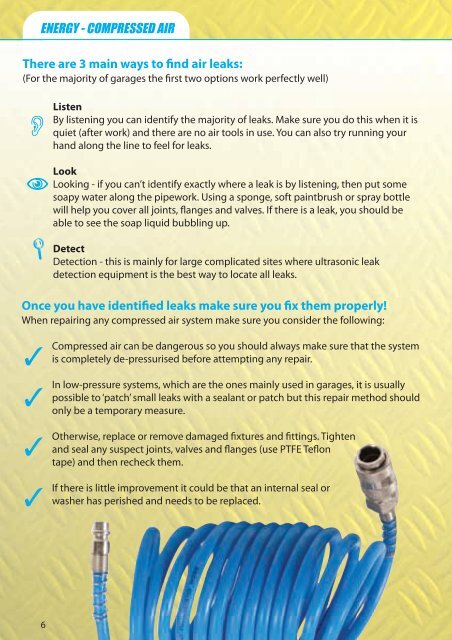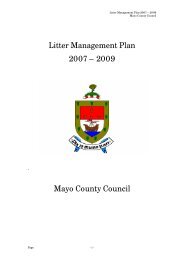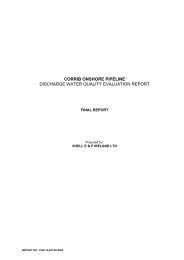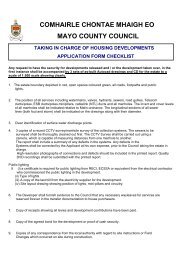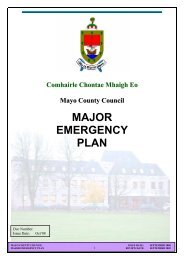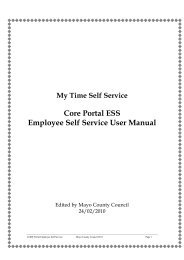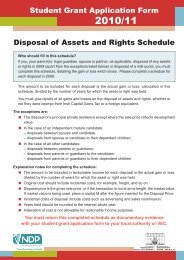Garage Waste (PDF-3169 kb) - Mayo County Council
Garage Waste (PDF-3169 kb) - Mayo County Council
Garage Waste (PDF-3169 kb) - Mayo County Council
You also want an ePaper? Increase the reach of your titles
YUMPU automatically turns print PDFs into web optimized ePapers that Google loves.
Smart <strong>Garage</strong> Brochure:Layout 1 27/10/2010 20:52 Page 6There are 3 main ways to find air leaks:(For the majority of garages the first two options work perfectly well)ENERGY - COMPRESSED AIRlistenBy listening you can identify the majority of leaks. Make sure you do this when it isquiet (after work) and there are no air tools in use. You can also try running yourhand along the line to feel for leaks.lookLooking - if you can’t identify exactly where a leak is by listening, then put somesoapy water along the pipework. Using a sponge, soft paintbrush or spray bottlewill help you cover all joints, flanges and valves. If there is a leak, you should beable to see the soap liquid bubbling up.detectDetection - this is mainly for large complicated sites where ultrasonic leakdetection equipment is the best way to locate all leaks.once you have identified leaks make sure you fix them properly!When repairing any compressed air system make sure you consider the following:✓✓✓✓Compressed air can be dangerous so you should always make sure that the systemis completely de-pressurised before attempting any repair.In low-pressure systems, which are the ones mainly used in garages, it is usuallypossible to ‘patch’ small leaks with a sealant or patch but this repair method shouldonly be a temporary measure.Otherwise, replace or remove damaged fixtures and fittings. Tightenand seal any suspect joints, valves and flanges (use PTFE Teflontape) and then recheck them.If there is little improvement it could be that an internal seal orwasher has perished and needs to be replaced.6


